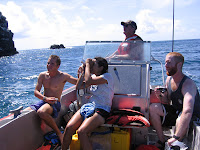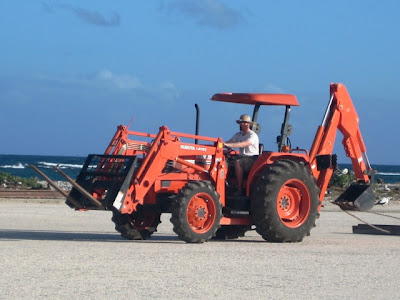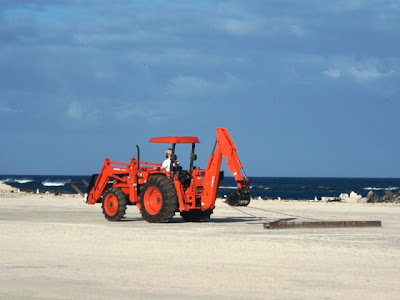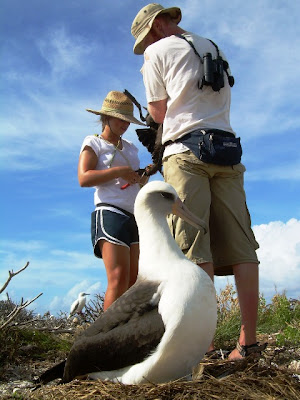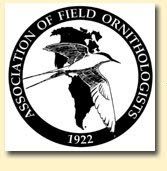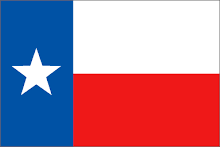
Good morning. The picture on the right is from this Sunday morning with a Laysan Albatross (
Diomedea immutabilis). You can see all the holiday shoppers getting in line to start the madness even before the sun is up.
A day and a half ago we began the first sweep of banding and reading existing Bird Banding Lab(BBL) metal bands and field-readable auxiliary bands of nesting albatross. In addition, we apply new bands to new birds that do not have any, or birds that do not have one or the other.
Remember ~6000 Black-footed Albatross (
Diomedea nigripes) are expected on the French Frigate Shoals atoll, and ~2000 Laysan Albatross.
Tern Island, all 37 acres of her, is the largest and most habitat friendly of the islets, emergent coral, and sandspit of the atoll. There are other albatross on a couple of the other islets, however.
Speaking of both species, the BFAL and LAAL are close relatives and share many behaviors, including features of their mating dance. We have seen some pictures included on previous posts.
And the two occasionally hybridize, but it is very rare according to most of the existing literature.

This picture of the previously posted "Rare pale BFAL adult" is now agreed upon by island staff, due to many behavioral observations, etc., is actually the rare BFAL x LAAL hybrid. This is the only one on the island. Quite timid in comparison to the others, for whatever reason.
Anyhow, the BFAl is the more aggresive of the two, but there are far fewer Black-footed than Laysan -- worldwide only about 100,000 pairs. Increasingly, fishing (drift) nets and longlines threaten these species, nearly 4,500 BFAL's were killed in nets in 1990 alone. (The Birds of North America, American Ornithologists' Union, 1993).
The Laysan Albatross' population is estimated at about 2.5 million, making it the most abundant albatross species in the Northern Hemisphere. (The Birds of North America, AOU, 1993)
As many as one million or more LAAL's use Midway Island as their breeding grounds.
Anyhow, we began the first of many sweeps, each with its own different purpose, the other day. First sweep of the BFAL nesters. Again reading BBL metal bands and auxiliary bands of Black-footeds on nests.
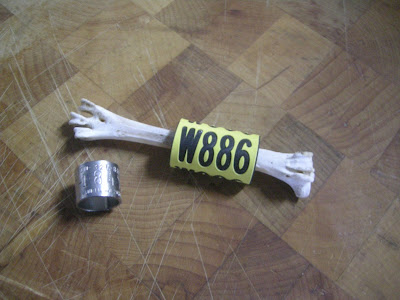
The Yellow-Black aux' band indicates bird banded and, depending on which leg, born on FFS and Tern I(more than likely, this year we are not doing any outer island albatross banding as there is enough going on here).
The BBL metal band is of a new metal. Previously, bands of all sized were made of aluminum. Think about it though, albatross live a great many decades and inhabit the open oceans of this planet. Salt water is quite corrosive. We've found horrible aluminum bands, bands that may even need chemical etching to read numbers, on birds that were less than 10 yrs old. These birds are of breeding age somewhere around years 5-7.
So finally, in a brilliant move, the BBL has begun making size 7B bands..atleast for these 2 albatross species out of steel. I can only hope they begin making them for all sizes. Pelagic birds, and coastal seabirds need them.
We are also tasked with removing any aluminum bands, that catch our eye needing removal, and replace them with new steel BBL metal bands.
Metal bands..my favorite is still Metallica.
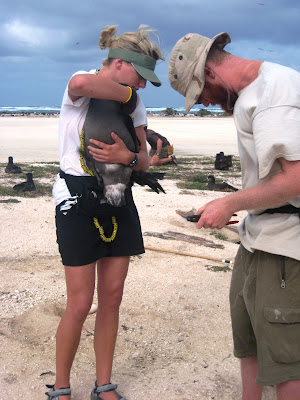
We first attempt to do this while the bird is on nest. One tech will place a clipboard to shield the tech applying the bands from the birds' pecking. You know how all puppies reach a stage in life where they start to show their unique personality, individual albatross have different personalities too.
There are the blessed some that are quite docile, maybe a peck at the back of the clipboard once in awhile. There are the turners, not Tina or Ike, but those that turn around on their nest while you are attempting to apply bands. So, you rotate with them. Then there are those that are quite energetic, turning and bill clacking before you even get to their leg. Those that turn quickly and often, and those that stand up in nest or off of nest are often difficult to band on the ground. So for the safety of the egg, and for the birds' stress levels, we recognize those as quickly as we can and make the decision to pick them up.
*As pictured below
*, she's not holding in a sneeze for that BFAL, but keeping its tiny and harmless little beak from being an issue. The nostrils are not covered, the bird calms down after a probable initial spike in stress, bands are applies the bird put down. Usually the bird, when let go and after flailing a bit, calmly walks back towards its egg and sits back upon it.
Usually.
Regardless, the work on the individual nester is not completed until that bird sits back down on its nest. Only then does the tech pair move on.

For the record, in my experience, the Black-footed Albtross comes in second to the Masked Booby(
Sula dactylatra) in terms of best(or worst) bite. Wedge-tailed Shearwater(
Puffinus pacificus) narrowly edged out into third place. Northern Cardinal(
Cardinalis cardinalis) is not even thought of in this catagory at the moment.
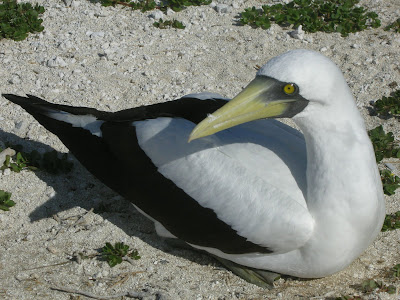 Moi? Masked Booby
Moi? Masked BoobyI can tell you, that the Black-footed Albatross possesses the potential to give the MABO a run for first place. But, these albatross have such a good temperament.
But the potential for first is most certainly there.
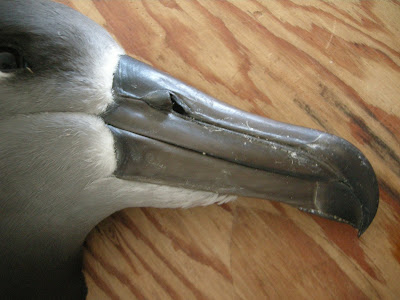 The albatross beak is made up of 5 plates, by the way.
The albatross beak is made up of 5 plates, by the way. All of these bites, and they are few by the way, I've deserved and/or expected. The birds are
never at fault.
And so, we have finished the south side of the island first BFAL nester sweep in a day and a half. It's actually quite incredible time, the south side bird colony is always more dense than the north, regardless of bird species.
Faithful readers, do watch out for holiday traffic and travel, and I'll do the same over here.
What a bird.
What a being.
Albatross.
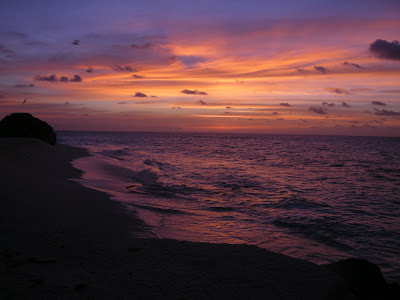 dawn
dawnGood morning.
-mwy
